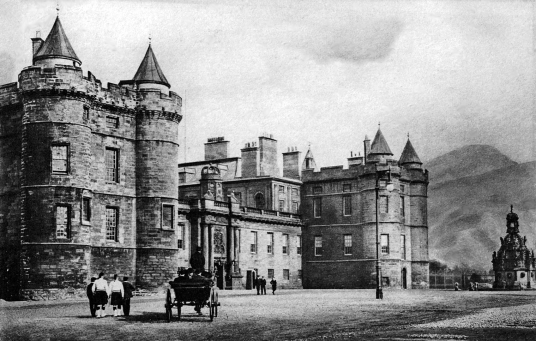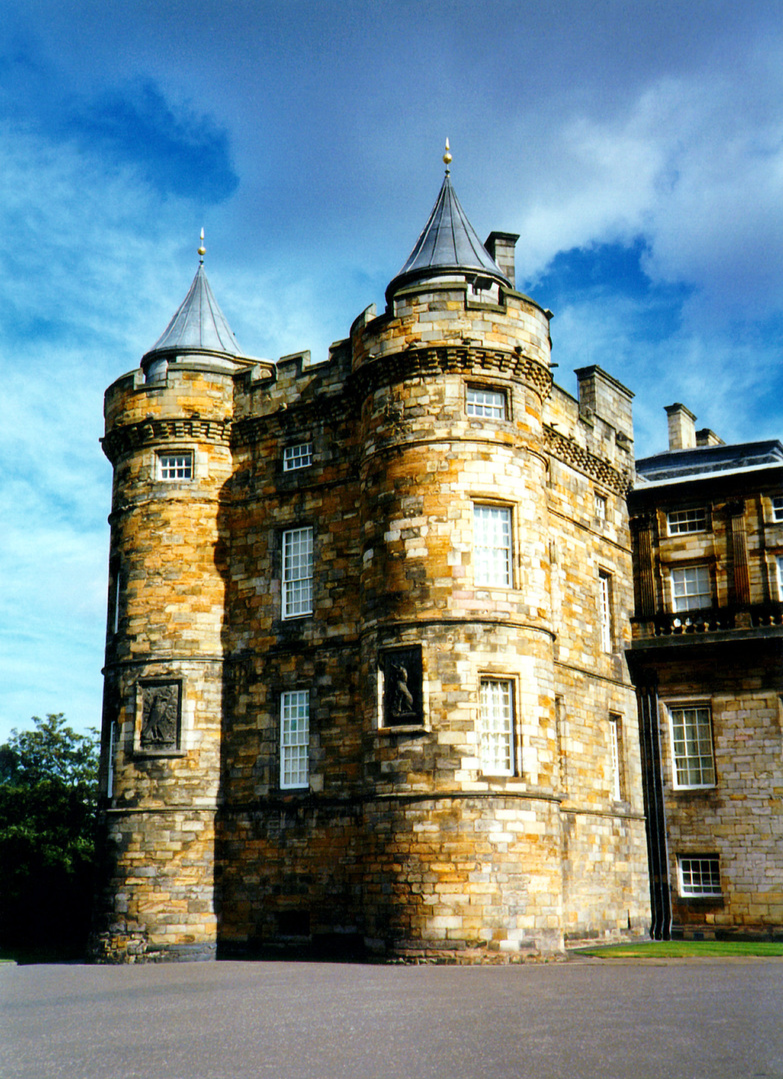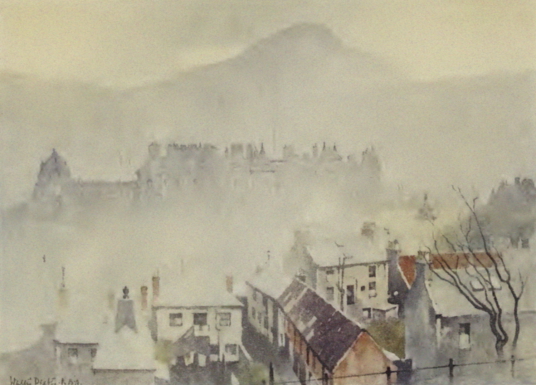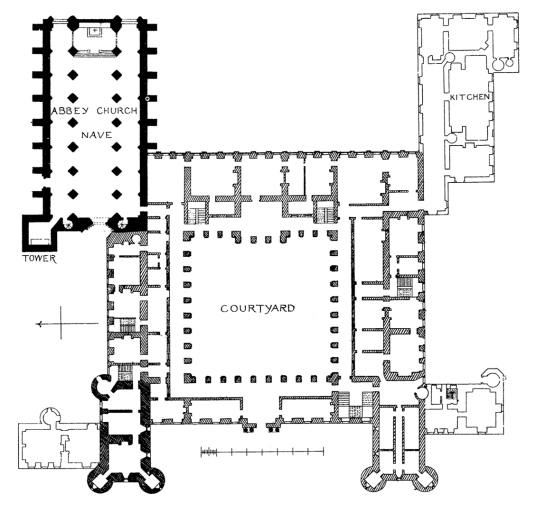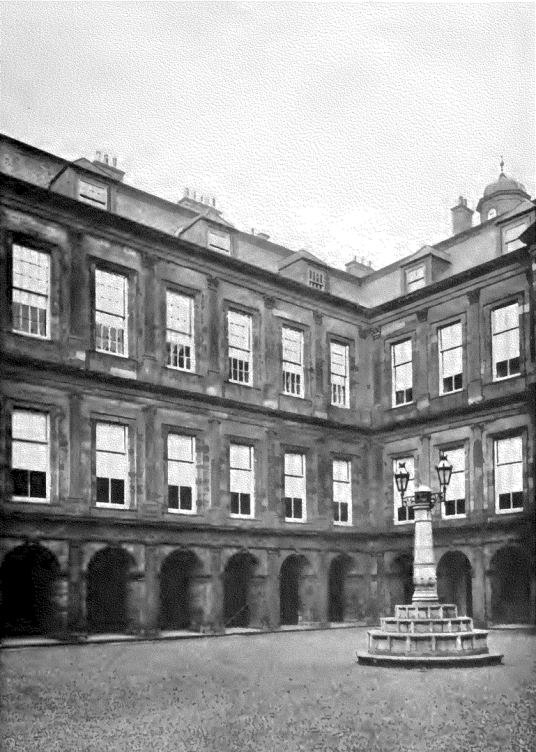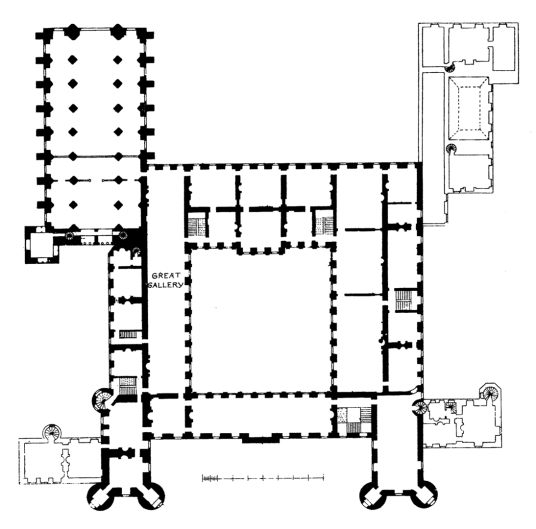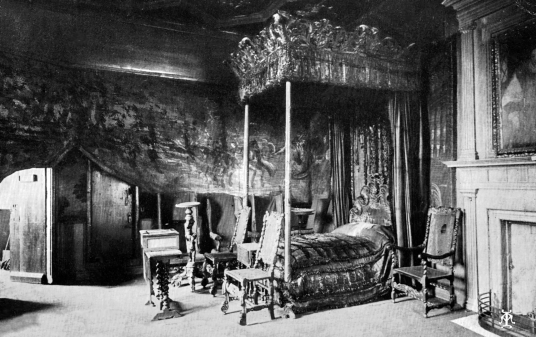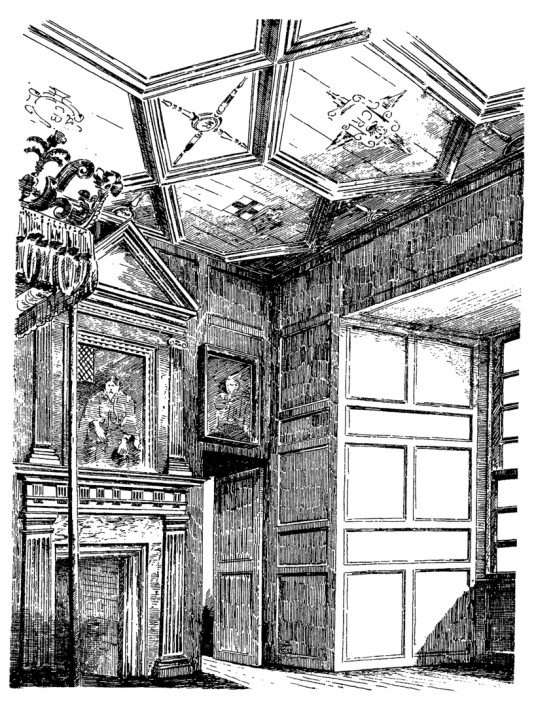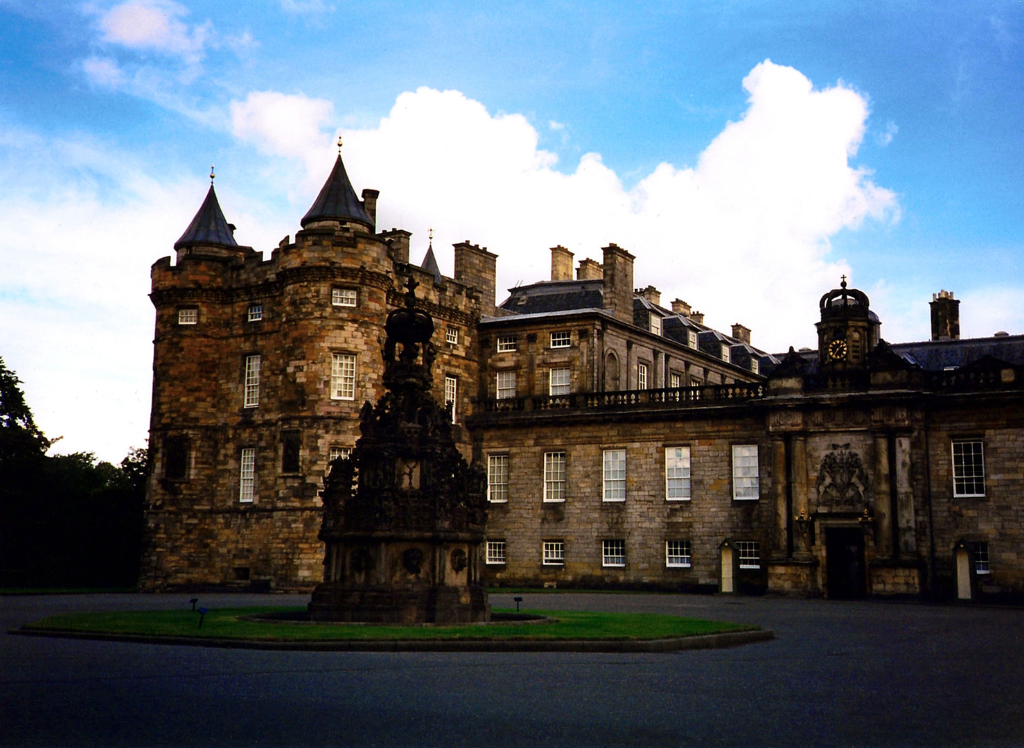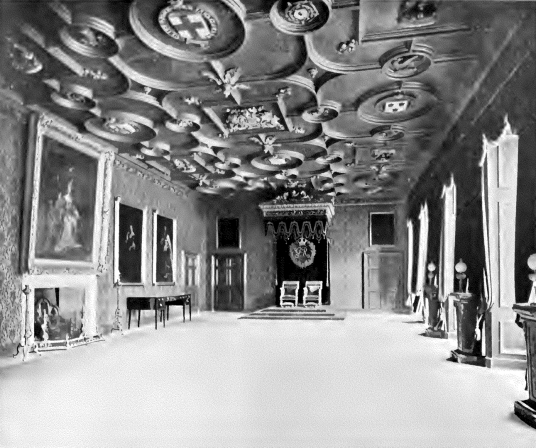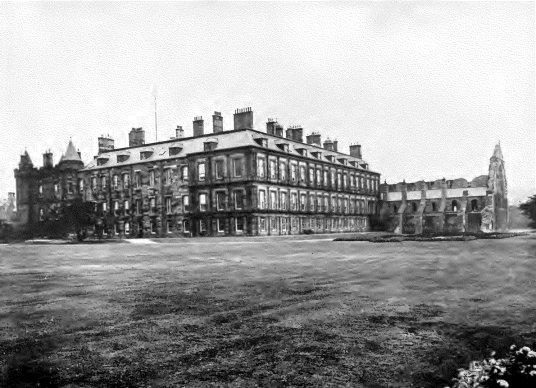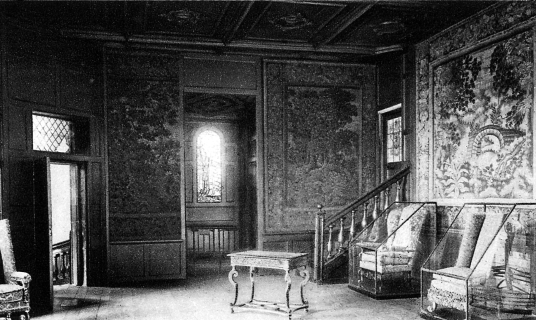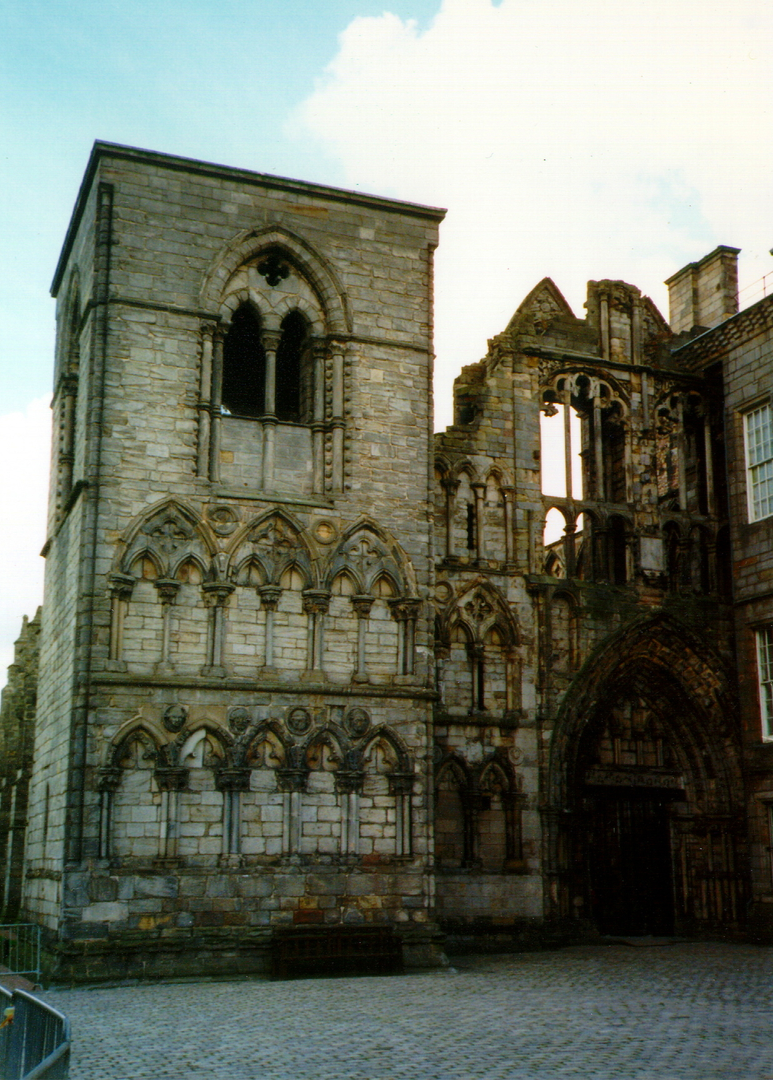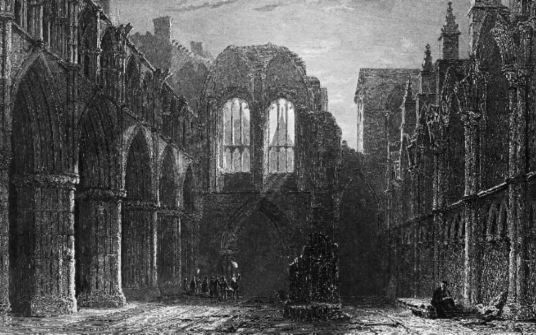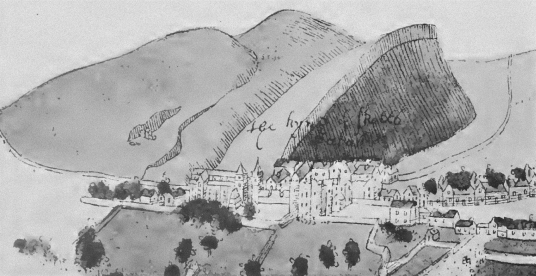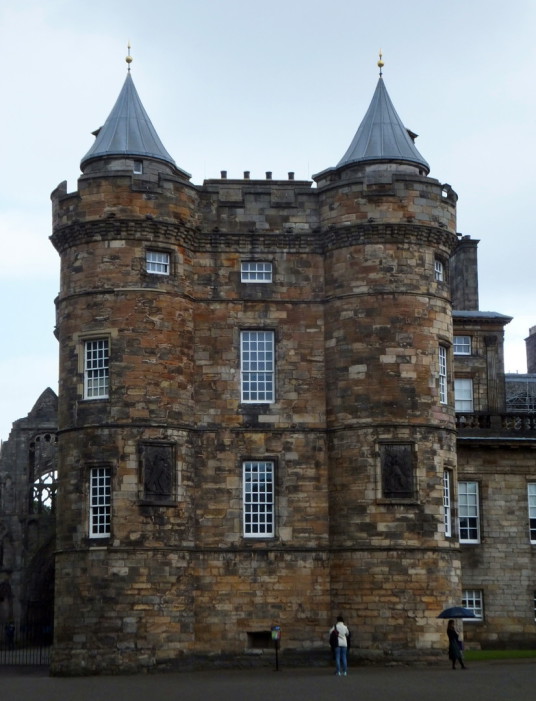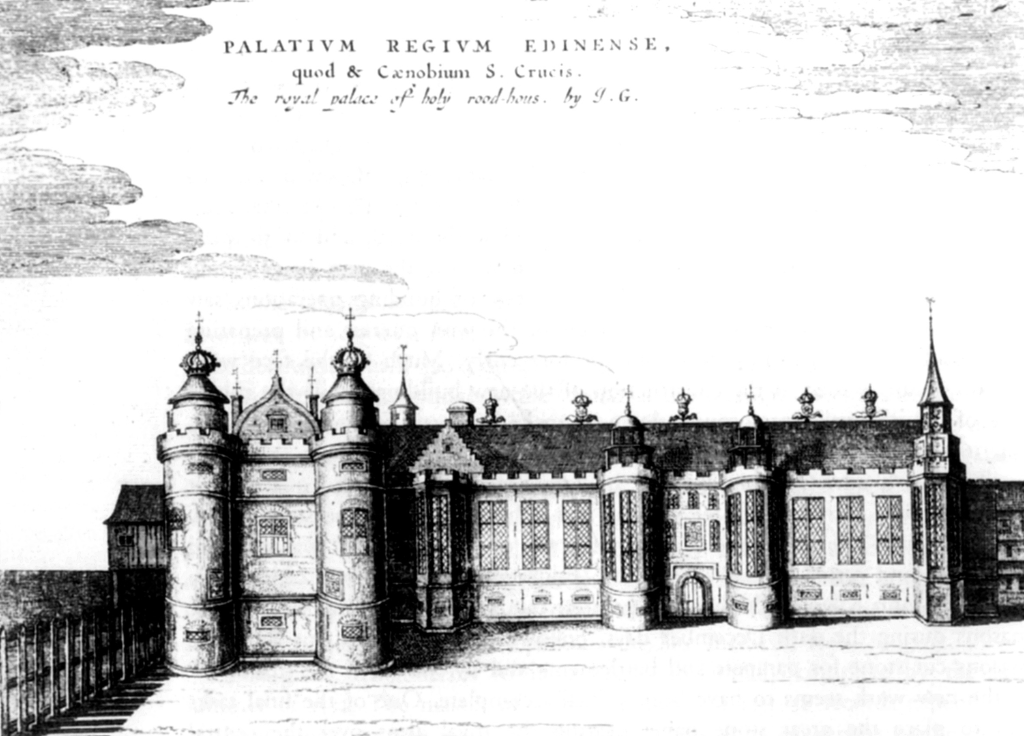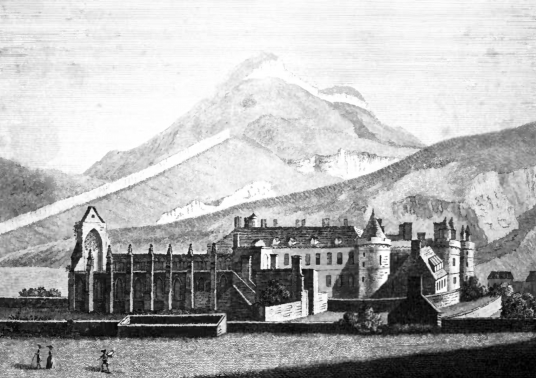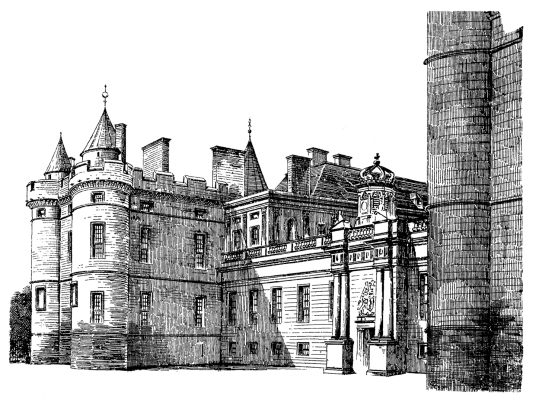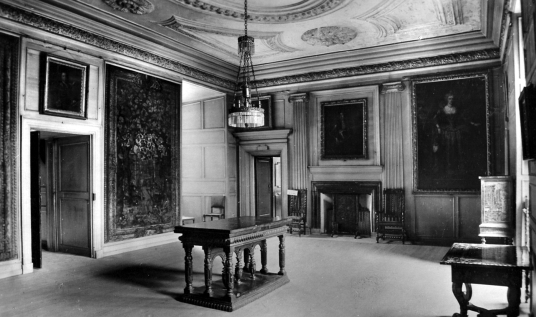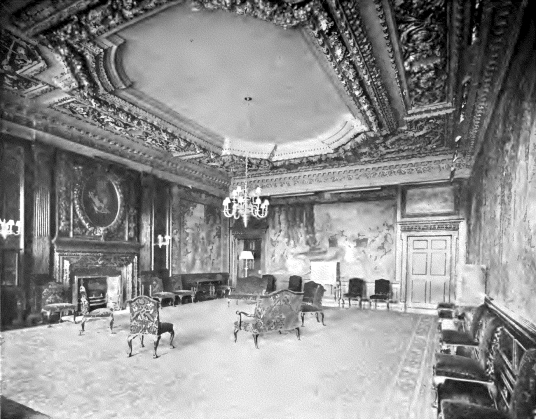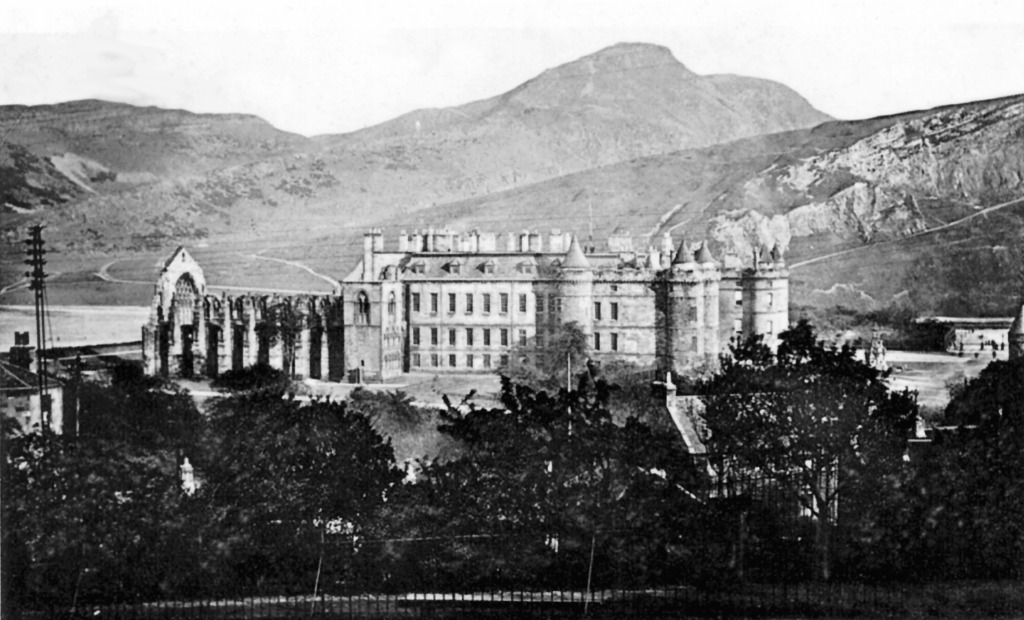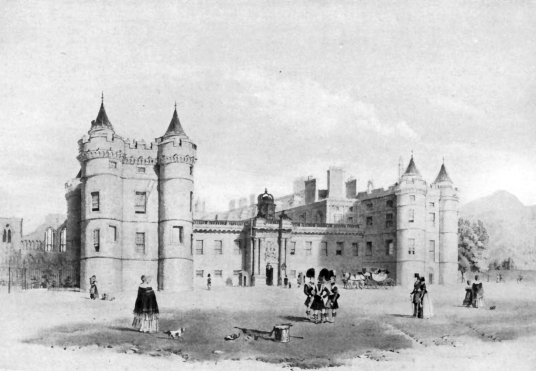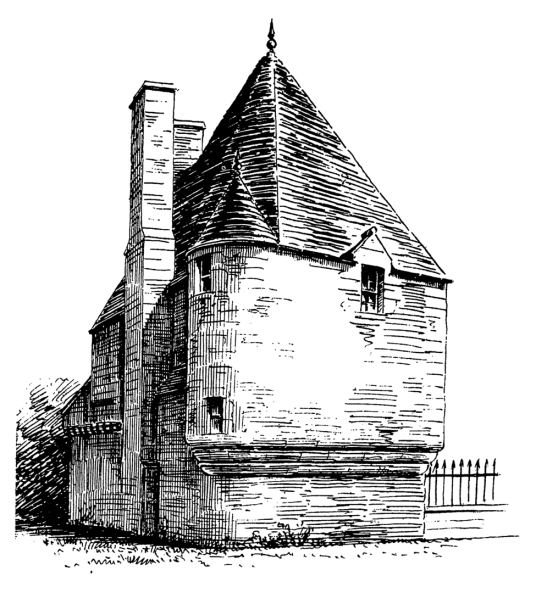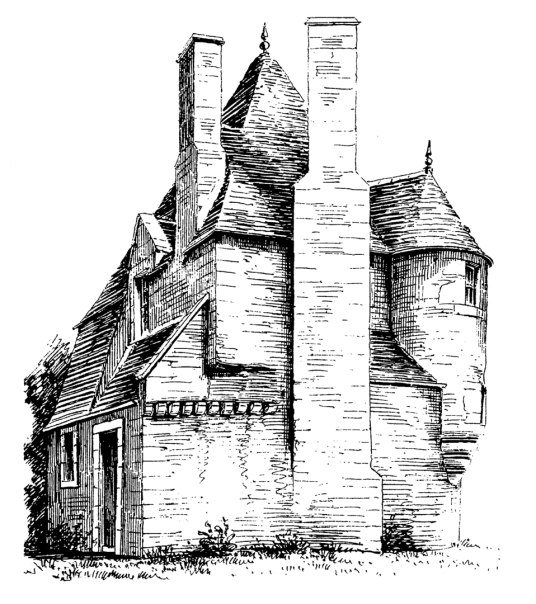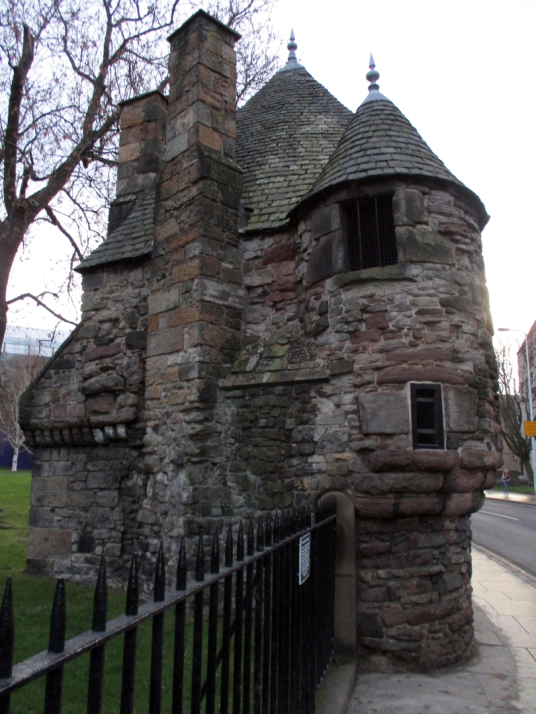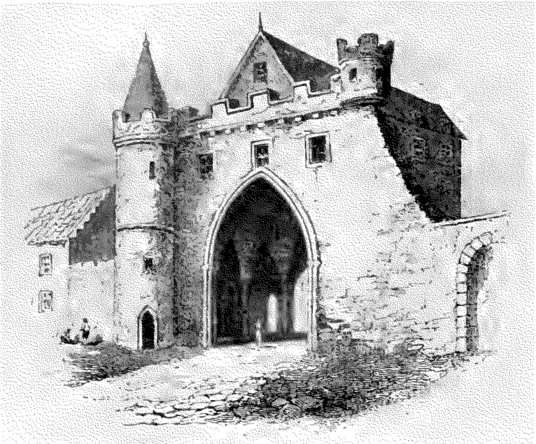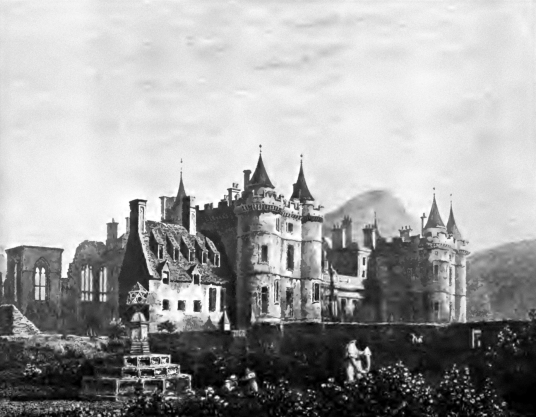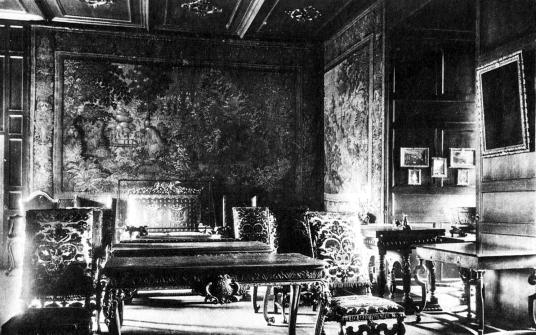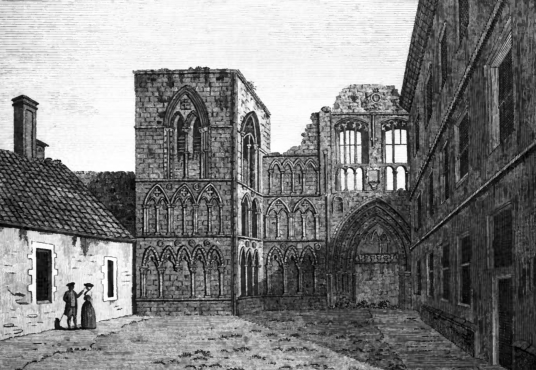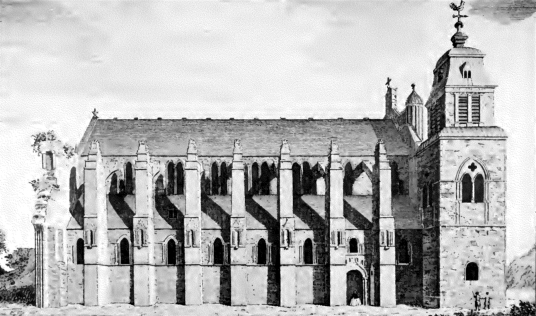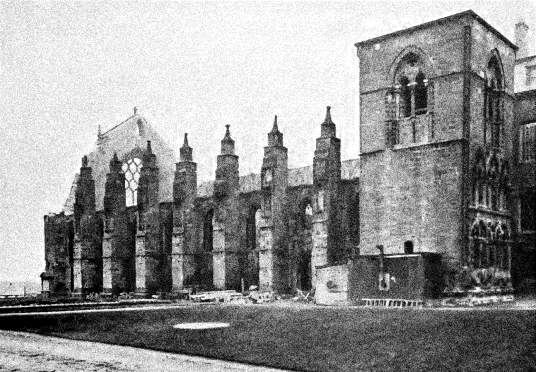Palace of Holyroodhouse
Palace of Holyroodhouse is a sumptuous royal residence with atmospheric period rooms, scene of the notorious murder of David Rizzio, secretary to Mary Queen of Scots, and still used by the present monarch Queen Elizabeth, at the foot of the famous Royal Mile in Edinburgh.
Lothians: About 1 mile east of Edinburgh Castle, on minor roads south of A1, on the north-east edge of Holyrood Park, opposite the Scottish Parliament Building, at Palace of Holyroodhouse.
Private NT 269739 OS: 66 EH8 8DX
OPEN: Open all year (except during royal visits): Apr-Oct, daily 9.30-18.00; Nov-Mar, daily 9.30-16.30; closed 25-26 Dec. Shop and cafe. Queen's Gallery (exhibition of works from the Royal
Collection).
Tel: 0131 556 5100 Web: www.royalcollection.org.uk
A fine and impressive edifice at the foot of the Royal Mile, Holyroodhouse consists of ranges surrounding a rectangular courtyard, one of which dates from the 16th century, rises to four storeys, and has towers capped by conical roofs. The walls of the old part are pierced by gunloops. The large, carved fountain in the courtyard to the front of the palace dates from the middle of the 19th century.
‘Holirudhous’ is marked on Blaeu’s map of The Lothians, and the building is depicted with a series of towers on Adair’s map of Midlothian although not named, along with Holyrood Park.
There is old decorative painting in Queen Mary’s Outer Chamber and Queen Mary’s Bedroom, dating from the 16th and 17th centuries.
Part of the present building was designed by Sir William Bruce for Charles II in 1671-8. The palace stands by the ruinous church of Holyrood Abbey and near the Scottish Parliament building.
Holyrood Abbey was founded by David I around 1128 although it was sacked in 1322 and 1385 by the English. James II was born at Holyrood in 1430 and was married and buried here. James III found the guest range of the abbey a comfortable alternative to Edinburgh castle, and James IV and James V extended the building. James IV's marriage to Margaret Tudor was celebrated in the abbey church in 1503.
The English burnt the abbey in 1544 and 1547, and all that survived their destruction was a block, with round corner towers (as mentioned above), built in 1529 to house private chambers for James V.
David Rizzio, Mary, Queen of Scots’s secretary was murdered here in her presence by men, including her husband, Henry Stewart, Lord Darnley, in 1566. A plaque marks the spot (reputedly along with a blood stain which cannot be washed off), and Rizzio is buried in the nearby Canongate Cemetery [NT 264738].
Palace of Holyroodhouse was partly burnt out in 1650 when Cromwell was staying here, and the old part was then used as a barracks. The palace was rebuilt in the late 17th century by the architect Sir William Bruce, a new block being built to balance the original tower with a connecting wall. The original 16th-century interiors survive in the old block.
Bonnie Prince Charlie stayed here for six weeks in 1745, and held court after the Battle of Prestonpans, while the Duke of Cumberland made it his residence after the Rising. Queen Victoria used the palace and made frequent visits, as did George V after World War I.
The palace is the official residence of the monarch in Scotland. The State apartments house tapestries and paintings, and the Picture Gallery has portraits of over 80 kings of Scots, painted by De Wet in 1684-6, and nearly all created by his imagination. There are ten acres of gardens, which are used for garden parties during Royal Week. The Queen's Gallery hosts a series of changing exhibitions from the Royal Collection.
Queen Mary’s Bath is a small two-storey building with a pyramidcal roof and a corbelled out turret, and dates from the 16th century and was probably a garden pavilion. The building was renovated in the middle of the 19th century, and is now isolated as other adjacent buildings and walls have been demolished and cleared.
The Fore Yett, a gateway into the outer courtyard of the palace, was built by James IV in 1503, and then rebuilt by James V in the 1530s, but was demolished in 1753. The Abbot's House, pictured above to the left of the main palace building (on the north side), an outstanding example of 16th-century architecture, was demolished in the 1830s. There was also a small range to the south of the main palace, but this has also gone.
A ‘Grey Lady’, thought to be the spirit of one of Mary’s companions, has reputedly been seen in the Queen’s Audience Chamber. Ghostly footsteps are said to have been heard in the long gallery.
The fine ruins of the abbey church adjoin the palace, and can also be visited. The east end of the building was demolished, while the surviving part was made the Chapel Royal. It was ransacked in 1688 and the roof collapsed 80 years later.
The church is the burial place of David II, James V and Henry Stewart, Lord Darnley. The tombs were despoiled by the English in attacks of 1544 and 1547.


